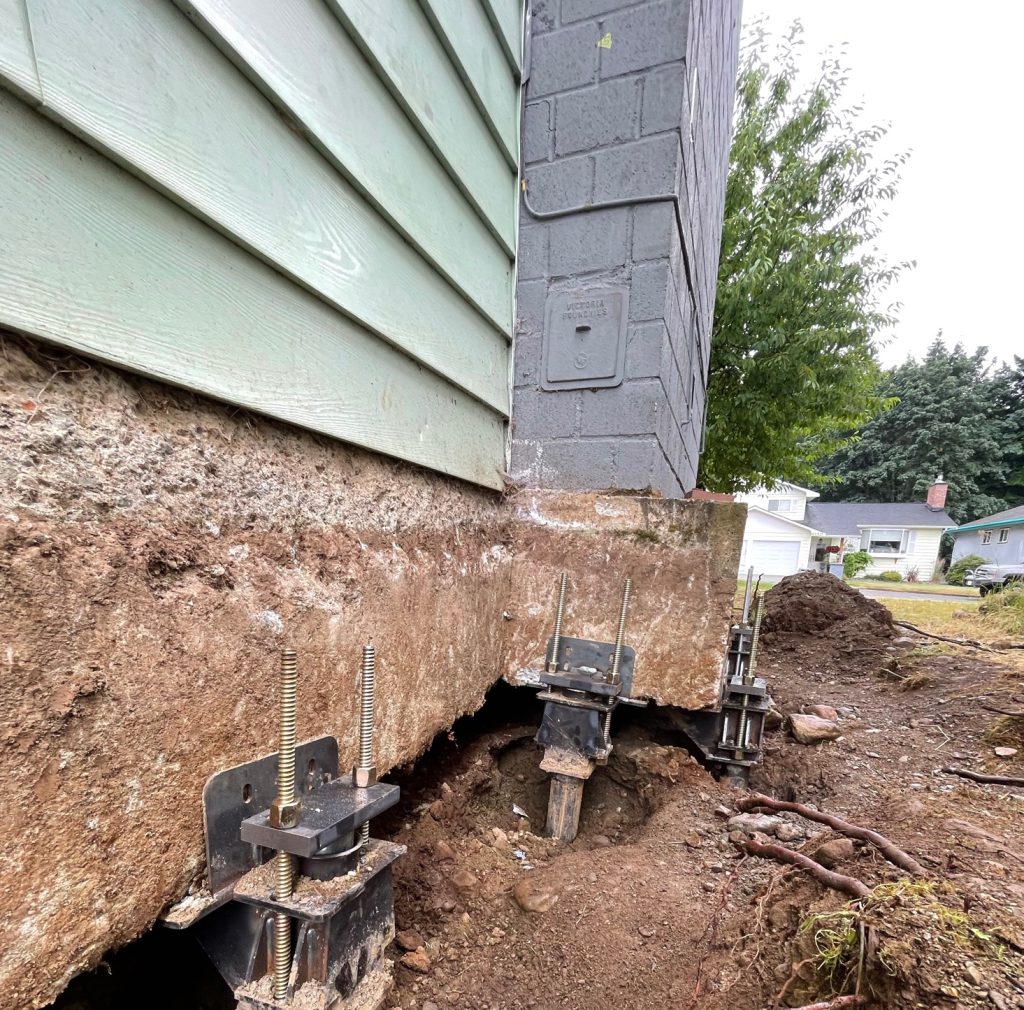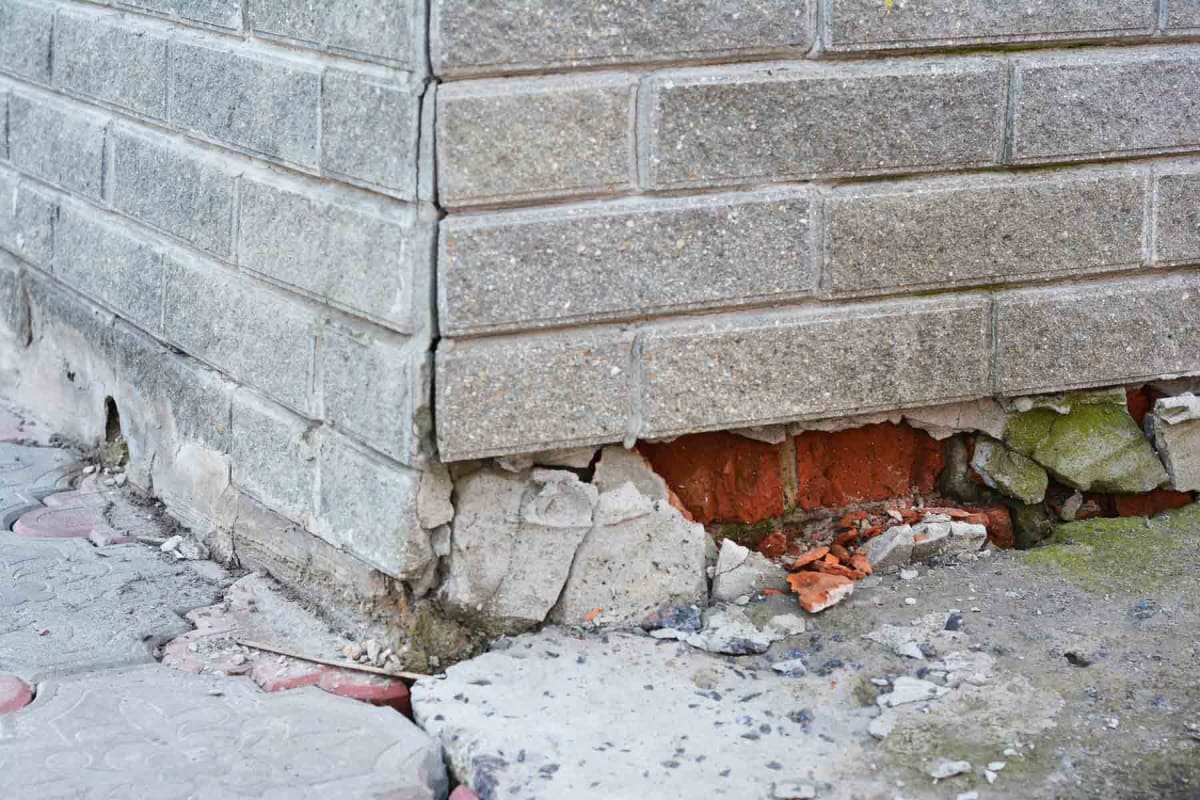Discovering Different Approaches of Foundation Repair Service for Various Soil Kinds
Foundation repair is an important aspect of preserving structural honesty, specifically when taking into consideration the diverse obstacles posed by various dirt kinds. The complexity of soil habits under varying problems requires a customized technique to repair, guaranteeing ideal remedies such as helical piers for unstable dirts or chemical cements for natural layers.
Recognizing Dirt Types
Dirt types play a crucial function in the stability and longevity of structure structures, making it important for property owners and building and construction professionals to comprehend their qualities and actions. The interaction in between soil and foundation can identify the architectural honesty of a structure. There are numerous soil types, each with unique physical buildings that impact how foundations are developed and preserved.
Granular soils, such as sand and gravel, supply good drainage and are frequently thought about stable. In comparison, cohesive soils like silts and clays exhibit various habits.
Rocky dirts, known for their strength and stability, deal excellent assistance for structures yet may need specialized equipment for excavation. On the other hand, loamy soils, which are a well balanced blend of sand, clay, and silt, frequently provide positive problems for structure support because of their moderate water drainage buildings.

Understanding these soil kinds is crucial for selecting appropriate foundation repair service approaches, making sure the sturdiness and security of structures over time.
Difficulties With Extensive Clay
Among the numerous dirt kinds, extensive clay offers special obstacles for foundation stability due to its propensity to undergo substantial quantity adjustments with wetness variation. This kind of soil swells when damp and agreements when completely dry, which can put in substantial pressure on structures. These changes can lead to foundation cracking, heaving, and settlement problems, posing significant dangers to the architectural stability of buildings.
The difficulties with extensive clay are intensified by its plasticity index, which determines the soil's capability to change form and volume. A high plasticity index shows greater potential for motion, increasing the chance of damage to foundations. This is especially troublesome in regions experiencing extreme or frequent climate adjustments, where cycles of wet and completely dry conditions are typical.
Moreover, the depth of large clay layers can vary, complicating the evaluation and preparation of appropriate foundation fixing approaches. The unpredictable nature of its movement requires specialized design options to reduce dangers. Furthermore, expansive clay can impact energy lines, pathways, and driveways, better complicating fixing initiatives. These intricacies require a detailed geotechnical examination to make certain efficient foundation repair methods are carried out, stressing the significance of addressing large clay obstacles with experience and treatment.
Solutions for Sandy Soils
Sandy dirts, defined by their large bit dimension and low cohesion, existing distinct challenges for structure stability as a result of their propensity for changing and disintegration. These residential properties necessitate specialized structure repair service techniques to guarantee architectural stability. One reliable remedy is making use of deep structure systems such as helical piers or driven heaps. By securing the foundation to much deeper, more steady dirt layers, these systems can supply the essential support to combat the moving nature of sandy soils.
Another suggested strategy is the application of dirt stabilization techniques. Chemical grouting, as an example, involves infusing a supporting agent into the dirt, which enhances cohesion and minimizes leaks in the structure. This process assists to solidify the sandy substratum, therefore reducing the address danger of erosion and motion.
Furthermore, installing appropriate water drainage systems is crucial in sandy soil conditions. Making sure adequate water drainage can avoid water buildup around the structure, which commonly intensifies erosion and dirt displacement. Techniques such as French drains or surface grading can be utilized to route water far from the structure border.
Dealing With Resolving in Loamy Soils
Loamy soils, recognized for their balanced mix of sand, clay, and silt, offer a fertile base for numerous structures yet can occasionally lead to structure settling because of their one-of-a-kind composition. This balanced structure offers excellent drainage and nutrient retention, making it ideal for farming and landscape design. This very same attribute can end up being troublesome for foundations, as changes in dampness web content can trigger the dirt to expand or agreement, leading to settling.
Addressing resolving in fertile soils calls for a multifaceted strategy. Originally, precise soil screening is essential to figure out the details structure and wetness material of the loam. When data is gathered, executing appropriate water drainage solutions is necessary to keep constant dampness degrees, thereby reducing the danger of dirt contraction or growth. French drains or surface grading are efficient techniques to reroute water far from the foundation.

Ingenious Repair Strategies
In the realm of structure repair service, innovative strategies are consistently being created to deal with the facility tests presented by numerous soil problems. As dirt types vary significantly in their architectural residential properties, traditional techniques may not always are enough. The arrival of brand-new innovations in foundation fixing offers more customized options, ensuring stability and durability.
One remarkable innovation is making use of helical piers, which are specifically efficient in large or unpredictable soils (foundation repair Oklahoma). These piers are screwed right into Going Here the ground up until they get to a stable layer of dirt, supplying strong support for the structure over. This approach minimizes disturbance and is adaptable to different dirt kinds, making it a flexible option
An additional cutting-edge method is the application of polyurethane foam shot. This approach entails injecting high-density polyurethane foam underneath the foundation to load spaces and support the framework. It is a much less invasive choice to traditional support, providing quick setup with minimal disturbance to the surrounding location.
Furthermore, dirt stablizing approaches, such as the usage of chemical cements, have actually obtained grip. These substances enhance soil strength and reduce permeability, avoiding future changing. Jointly, these cutting-edge fixing techniques offer reliable solutions for the diverse challenges positioned by varying dirt problems.
Verdict

Foundation repair service is a critical element of keeping structural stability, especially when taking into consideration the diverse obstacles positioned by various soil kinds (foundation repair Oklahoma). The complexity of dirt behavior under varying problems demands a tailored approach to fix, guaranteeing ideal solutions such as helical piers for unstable soils or chemical grouts for cohesive layers. By securing the foundation to deeper, much more stable dirt layers, these systems can offer the essential support to counteract the changing nature of sandy soils
Structure repair requires mindful factor to consider of soil kinds to guarantee stability and longevity. Chemical grouts enhance dirt stamina and decrease permeability in natural soils.